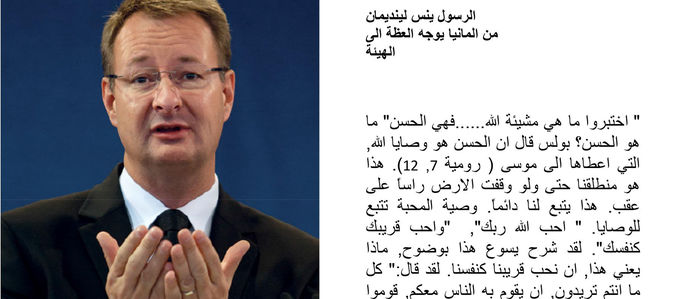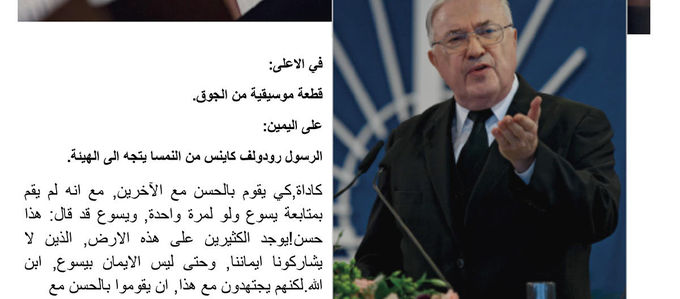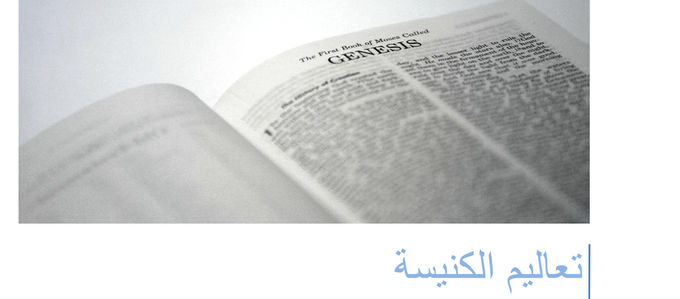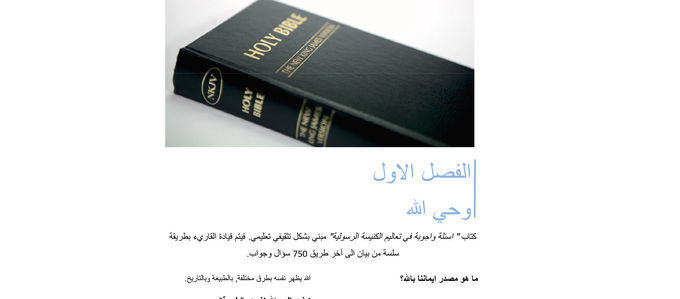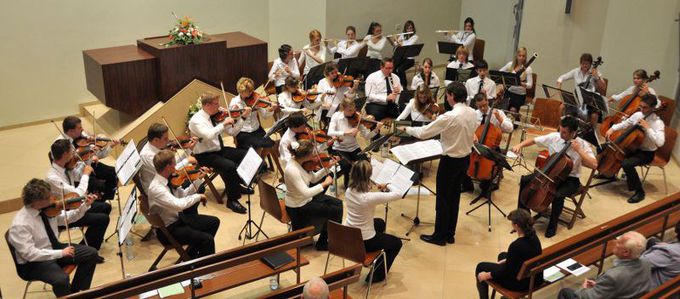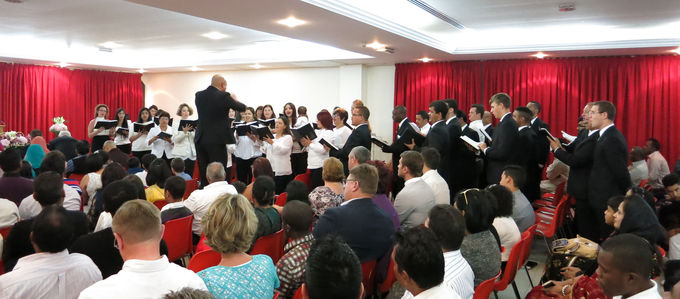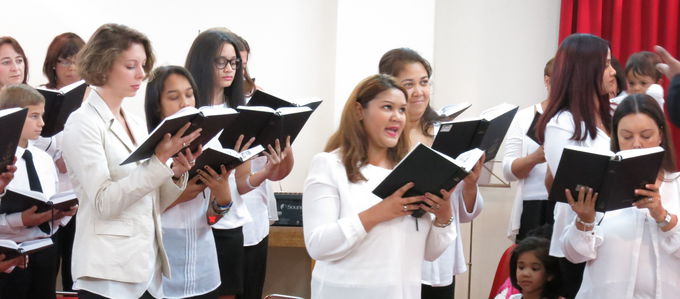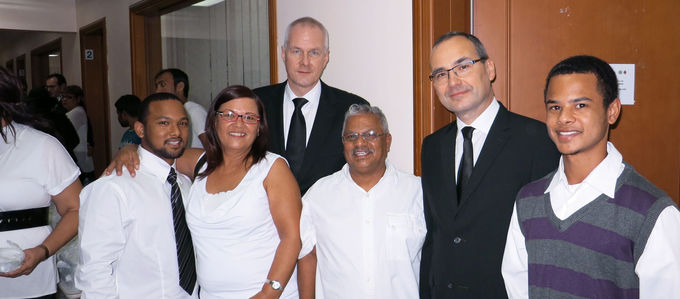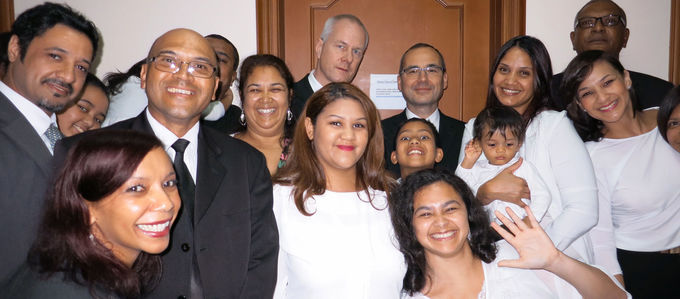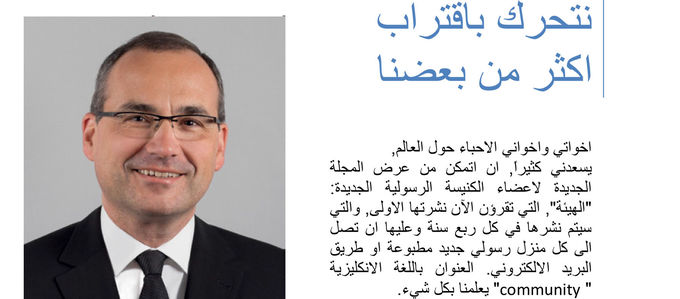
Le sous-titre : « Tout autour du monde » exprime la vocation du magazine « community ». Aux éditions anglaise, espagnole et française vient s’ajouter une autre : celle en langue arabe, une vraie particularité.
Ceux qui sont habitués à l’écriture latine se tromperont sans doute de sens en ouvrant le magazine community en arabe. Il faut dire qu’en arabe, il n’y a pas que l’écriture qui aille de la droite vers la gauche, mais aussi la pagination. Du point de vue occidental, le fascicule commence pour ainsi dire par la fin, et les pages ne sont pas agrafées à gauche, mais à droite.
Le passage d’une culture à l’autre implique un surplus de travail
Pour Emil Mansour, il n’y a là rien d’extraordinaire. Ce conducteur de communauté est originaire d’Israël ; il a grandi dans un foyer polyglotte (anglais/français et hébreu/arabe) et vit actuellement en haute Forêt-Noire, en Allemagne. Il travaille en qualité de traducteur pour l’Église territoriale d’Allemagne méridionale.
Les particularités de la typographie arabe ne suscitent pas, pour l’évangéliste Mansour, un surcroît de travail d’ordre linguistique seulement; il faut dire que, de nos jours, les ordinateurs s’adaptent parfaitement aux différentes orthographes. Il faut cependant encore inverser la pagination du fascicule d’une part et, d’autre part, il faut souvent aussi modifier la mise en pages.
Une demande qui ne se limite pas au Proche-Orient
La majeure partie de l’édition arabe est à destination d’Israël dont la population est, à 20 %, d’origine arabe. La reçoivent aussi nos frères et soeurs du Liban, des Émirats Arabes Unis et de l’Égypte. Quelques fascicules sont lus, de surcroît, en Amérique du Nord et en Europe.
C’est par son origine, mais aussi par sa longue activité missionnaire, que l’évangéliste Mansour connaît bien les conditions de vie de sa clientèle. En leur qualité de chrétiens, les membres de l’Église néo-apostolique font immanquablement partie d’une minorité. Or, cette réalité peut entraîner des inconvénients, non seulement sur le plan de la foi, mais aussi au quotidien.
Les services divins étalés sur trois jours
En tout état de cause, la région est exposée aux influences les plus diverses, notamment en ce qui concerne la journée chômée : ce que le dimanche est aux chrétiens, le samedi l’est aux Juifs et le vendredi aux musulmans. En fonction de la région, le jour et l’horaire du service divin s’adaptent à la religion dominante.
Pour Mansour, l’officiant, cette réalité présente aussi quelques avantages : il peut ainsi planifier ses déplacements de manière efficace, en servant les différentes communautés les unes après les autres, le vendredi, le samedi et le dimanche. Il lui arrive ainsi de célébrer jusqu’à sept services divins en l’espace de trois jours.
Une rubrique régionale pour l’Afrique occidentale
Pour Lothar Heim,l’édition en langue arabe de community fait partie des projets mineurs. Au sein de l’Administration ecclésiale d’Allemagne méridionale, cet évangéliste de distrcit est notamment en charge de la réalisation de publications. Tandis que le tirage de l’édition arabe se limite, pour lui, à quelques centaines de fascicules, le nombre d’exemplaires destinés aux pays d’Afrique occidentale, dont la desserte est assurée depuis l’Allemagne méridionale, se monte à plus de 47.000.
Les éditions anglaise, espagnole et française de community y sont distribuées dans les pays suivants : le Ghana, le Togo, le Bénin, la Guinée-Équatoriale, le Gabon, le Cameroun, la Guinée, la Sierra Leone, le Liberia et la Côte d’Ivoire. Tandis que l’édition arabe est élaborée sous forme de copies et envoyée ensuite par courrier postal, les éditions distribuées en Afrique occidentale (qui comportent un supplément régional de quatre pages) sont imprimées sur place, dans des imprimeries situées au Ghana, au Nigerai, au Cameroun, en Guinée et en Sierra Leone.
Tout autour du monde, traduit en près de 40 langues
Là encore, il ne s’agit que d’une infime partie du réseau informatif mondial. Vient ainsi notamment de paraître l’édition de community en langue Bahasa, pour l’Indonésie. D’autres traductions sont en cours d’élalboration.
Est publiée, pour une part, l’édition complète de 32 pages, et, par ailleurs, l’édition condensée de community, de12 pages. Ces informations centrales se retrouvent, et dans « Unsere Familie », en langue allemande, et dans «African Joy », ces deux publications demeurant l’organe officile de l’Église néo-apostolique, le premier dans l’espace germanophone et le second en Afrique. De cette manière, les principaux contenus de « Tout autour du monde » paraissent dans une petite quarantaine de langues.








